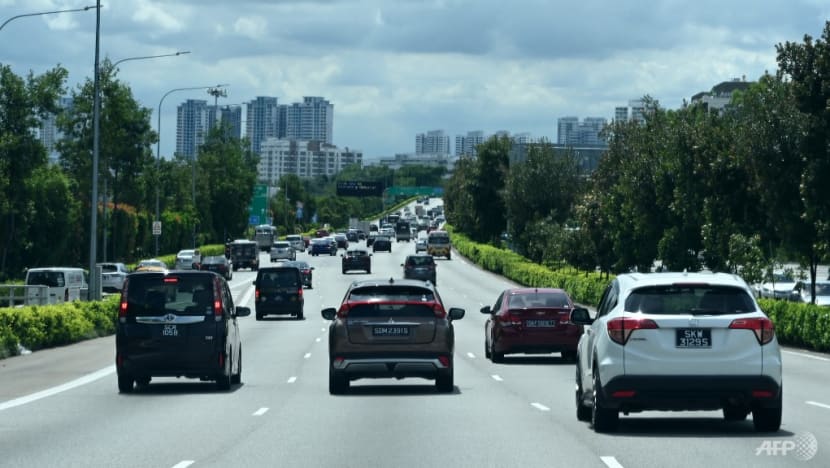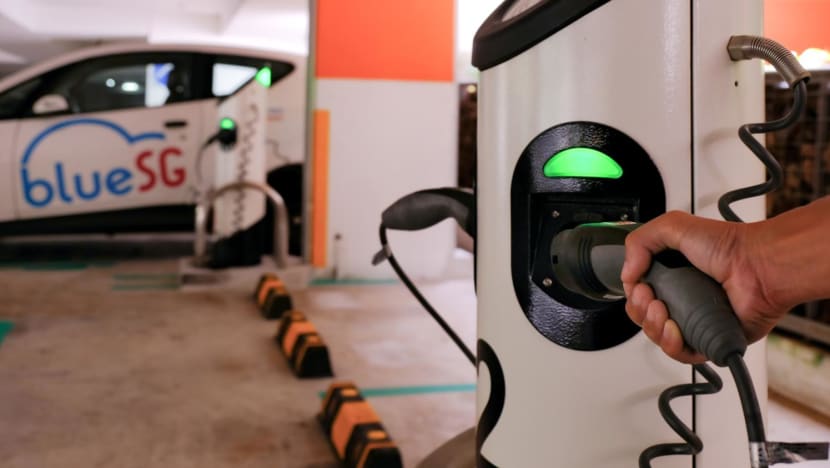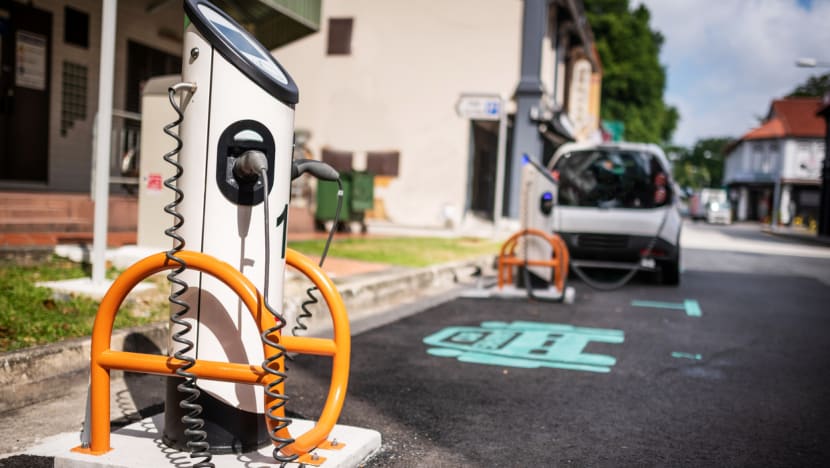Public infrastructure upgrade key to boosting electric vehicles adoption in Singapore
There is a small, but growing, number of EV converts in Singapore, drawn by the lower environmental impact and financial costs.

SINGAPORE: As Southeast Asia undergoes a shift towards cleaner energy, Singapore can lead the region in technology transfer and the building of renewable energy infrastructure, said a senior official from a global environmental body.
This is especially relevant as Singapore sets out on a major push for the adoption of electric vehicles (EV), with plans to deploy about 60,000 charging points by the end of the decade.
Singapore is trying to phase out internal combustion engine vehicles by 2040, in line with its sustainability goals.
Registrations for new zero-emission vehicles so far this year, including EVs and hybrids, have nearly tripled from last year, accounting for more than one out of ten new vehicle registrations.
A LEADING ROLE
Singapore's approach to readying the country for the mass adoption of EVs is not going unnoticed.
Environmental group World Wide Fund for Nature (WWF) says Singapore's current electrification plans are bold enough for it to serve a leading role in the region's decarbonisation.
"We see Singapore can really take a leading role especially in the ASEAN (Association of Southeast Asian Nations) region, to serve as a role model for them to decarbonise their transport system as well,” said Ms Stefanie Beitien, head of market transformation for WWF-Singapore.
She explained that nearly 90 per cent of transport-related emissions in Southeast Asia are from road transport, which leads to massive air pollution, especially in urbanised areas.

“Singapore can play a role not only in the EV adoption, but also in technology transfer, in capacity building, and potentially also in leading investments into the region into renewable energy, as well as into green infrastructure,” she said.
She emphasised that electrification must go hand-in-hand with the wider use of renewable energy, to ensure its overall sustainability.
GROWING NUMBER OF CONVERTS
There is a small, but growing, number of EV converts in Singapore, drawn to the new vehicles due to the lower environmental impact and financial costs.
One such user is Mr Ranjan Vaswani, who drives a BMW all-electric sport utility vehicle (SUV) which he traded his petrol-powered Volvo for earlier this year.
"To me, the EV is the next evolution of the car, and the choice was made easier because it's also easier on the environment. On top of that, the use of electricity is much cheaper than petrol,” he said.
He added that there are fewer breakdowns, with less maintenance needed for his car.
The Land Transport Authority (LTA) is working with industry partners to build a high-powered charging network for high-mileage drivers like taxis, commercial fleets and heavy goods vehicles.
But for non-commercial drivers, there is still not enough demand yet to justify the infrastructural upgrades, due to the frequency of their usage.

“As we plan for our charging network, we must keep in mind that we are a small densely-populated city where our EV drivers tend to only have a mileage of less than 50km a day,” said Ms Stephanie Tan, head of the LTA’s National Electric Vehicle Centre.
“With EV cars now having a range of more than 300km, we actually only charge our cars once every five days, or even up to a week. So with that, we actually do think that low-powered overnight charging will be sufficient."
Under a new Bill passed in parliament in November this year, new developments must be able to support future EV charging needs. LTA also launched a study earlier this year to identify what infrastructure upgrades are needed for different public car parks.
CHARGERS READILY AVAILABLE
Singapore is aiming to set up 60,000 EV charging points by 2030.
Accessibility is a crucial factor when it comes to choosing where to install EV chargers, said Mr Freddie Chew, general manager of ComfortDelGro ENGIE, one of the operators picked by the government to help deploy charging points across public housing car parks.

"The process began with us basically identifying the car park lots and to look for locations to put the EV chargers. To do so, we actually consider the accessibility, and also the convenience, to our EV users,” said Mr Chew.
“The other considerations that we will have is the safety and also the close proximity to the power source,” he said.
However, as most car parks here were not designed with EVs in mind, the power sources often do not have sufficient capacity to charge multiple such vehicles.
"As with most car parks in Singapore, when they were first designed and constructed, they did not have electric vehicles in mind,” said Mr Goh Chee Kiong, chief executive officer of charging point operator Charge+.
“So what we see today on the ground is that in a lot of car parks in Singapore, whether they are (in the) public sector or private sector, there is a limitation in terms of power supply.”
To overcome this challenge, some operators are using technology to adjust the charging speed based on the available power supply, so that more cars can be juiced up on the same power load.
However, this is just a temporary fix, they say.
"That problem can only be addressed by smart charging solutions only for the next three to five years,” said Mr Goh. “In the longer run, there needs to be a more systemic relook at how we can increase power supply to many car parks."
















